
Lithography is a planographic method of printing originally based on the immiscibility of oil and water. The printing is from a stone or a metal plate with a smooth surface. It was invented in 1796 by the German author and actor Alois Senefelder and was initially used mostly for musical scores and maps. Lithography can be used to print text or images onto paper or other suitable material. A lithograph is something printed by lithography, but this term is only used for fine art prints and some other, mostly older, types of printed matter, not for those made by modern commercial lithography.

Etching is traditionally the process of using strong acid or mordant to cut into the unprotected parts of a metal surface to create a design in intaglio (incised) in the metal. In modern manufacturing, other chemicals may be used on other types of material. As a method of printmaking, it is, along with engraving, the most important technique for old master prints, and remains in wide use today. In a number of modern variants such as microfabrication etching and photochemical milling, it is a crucial technique in modern technology, including circuit boards.

Printmaking is the process of creating artworks by printing, normally on paper, but also on fabric, wood, metal, and other surfaces. "Traditional printmaking" normally covers only the process of creating prints using a hand processed technique, rather than a photographic reproduction of a visual artwork which would be printed using an electronic machine ; however, there is some cross-over between traditional and digital printmaking, including risograph.
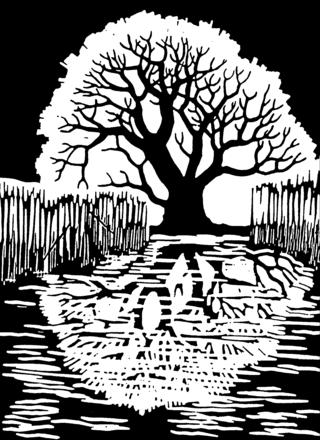
Linocut, also known as lino print, lino printing or linoleum art, is a printmaking technique, a variant of woodcut in which a sheet of linoleum is used for a relief surface. A design is cut into the linoleum surface with a sharp knife, V-shaped chisel or gouge, with the raised (uncarved) areas representing a reversal of the parts to show printed. The linoleum sheet is inked with a roller, and then impressed onto paper or fabric. The actual printing can be done by hand or with a printing press.

Chine-collé or chine collé is a printmaking technique in which the image is transferred onto a surface that is bonded onto a heavier support in the printing process. One purpose is to allow the printmaker to print on a much more delicate surface, such as Japanese paper or linen, that pulls finer details off the plate. Another purpose is to provide a background colour behind the image that is different from the surrounding backing sheet.

Monotyping is a type of printmaking made by drawing or painting on a smooth, non-absorbent surface. The surface, or matrix, was historically a copper etching plate, but in contemporary work it can vary from zinc or glass to acrylic glass. The image is then transferred onto a paper by pressing the two together, using a printing-press, brayer, baren or by techniques such as rubbing with the back of a wooden spoon or the fingers which allow pressure to be controlled selectively. Monotypes can also be created by inking an entire surface and then, using brushes or rags, removing ink to create a subtractive image, e.g. creating lights from a field of opaque colour. The inks used may be oil or water-based. With oil-based inks, the paper may be dry, in which case the image has more contrast, or the paper may be damp, in which case the image has a 10 percent greater range of tones.
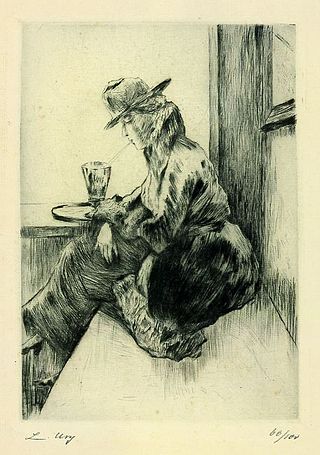
Drypoint is a printmaking technique of the intaglio family, in which an image is incised into a plate with a hard-pointed "needle" of sharp metal or diamond point. In principle, the method is practically identical to engraving. The difference is in the use of tools, and that the raised ridge along the furrow is not scraped or filed away as in engraving. Traditionally the plate was copper, but now acetate, zinc, or plexiglas are also commonly used. Like etching, drypoint is easier to master than engraving for an artist trained in drawing because the technique of using the needle is closer to using a pencil than the engraver's burin.

Aquatint is an intaglio printmaking technique, a variant of etching that produces areas of tone rather than lines. For this reason it has mostly been used in conjunction with etching, to give both lines and shaded tone. It has also been used historically to print in colour, both by printing with multiple plates in different colours, and by making monochrome prints that were then hand-coloured with watercolour.
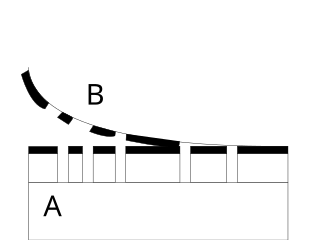
Relief printing is a family of printing methods where a printing block, plate or matrix, which has had ink applied to its non-recessed surface, is brought into contact with paper. The non-recessed surface will leave ink on the paper, whereas the recessed areas will not. A printing press may not be needed, as the back of the paper can be rubbed or pressed by hand with a simple tool such as a brayer or roller. In contrast, in intaglio printing, the recessed areas are printed.

Photogravure is a process for printing photographs, also sometimes used for reproductive intaglio printmaking. It is a photo-mechanical process whereby a copper plate is grained and then coated with a light-sensitive gelatin tissue which had been exposed to a film positive, and then etched, resulting in a high quality intaglio plate that can reproduce detailed continuous tones of a photograph.

Intaglio is the family of printing and printmaking techniques in which the image is incised into a surface and the incised line or sunken area holds the ink. It is the direct opposite of a relief print where the parts of the matrix that make the image stand above the main surface.

Line engraving is a term for engraved images printed on paper to be used as prints or illustrations. The term is mainly used in connection with 18th- or 19th-century commercial illustrations for magazines and books or reproductions of paintings. It is not a technical term in printmaking, and can cover a variety of techniques, giving similar results.

Carborundum mezzotint is a printmaking technique in which the image is created by adding light passages to a dark field. It is a relatively new process invented in the US during the 1930s by Hugh Mesibov, Michael J. Gallagher, and Dox Thrash, an artist working in Philadelphia with the Works Progress Administration (WPA)). "Carborundum Collagraph" collagraph is a different printmaking technique, invented in 1952 by Henri Goetz, an American abstract artist living in Paris. The carborundum mezzotint uses the grits to create pits below the surface of the metal that then hold ink, like traditional mezzotint. The carborundum collagraph creates the image above the surface of the matrix, which does not have to be metal. In one method, the grits are mixed into a paste using an acrylic base that is painted onto the matrix, creating the image much like painting. Once dried, this holds the ink; the wiping and printing are done the same as etching. The techniques described following and below are alternatives to the paste mixture technique, yet all are creating the image above the surface of the matrix. Carbordundum collagraph allows artists to work on a large scale. Normally, cardboard or wood plates are coated in a layer of carborundum or screen, and the lights are created by filling in the texture with screen filler or glue. Carborundum prints may be printed as intaglio plates.
Viscosity printing is a multi-color printmaking technique that incorporates principles of relief printing and intaglio printing. It was pioneered by Stanley William Hayter.
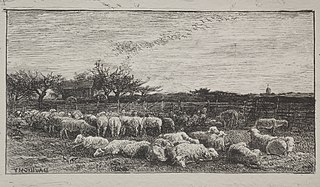
Cliché verre, also known as the glass print technique, is a type of "semiphotographic" printmaking. An image is created by various means on a transparent surface, such as glass, thin paper or film, and then placed on light sensitive paper in a photographic darkroom, before exposing it to light. This acts as a photographic negative, with the parts of the image allowing light through printing on the paper. Any number of copies of the image can be made, and the technique has the unique advantage in printmaking that the design can be reversed just by turning the plate over. However, the image loses some sharpness when it is printed with the plain side of the glass next to the paper.

Vitreography is a fine art printmaking technique that uses a 3⁄8-inch-thick (9.5 mm) float glass matrix instead of the traditional matrices of metal, wood or stone. A print created using the technique is called a vitreograph. Unlike a monotype, in which ink is painted onto a smooth glass plate and transferred to paper to produce a unique work, the vitreograph technique involves fixing the imagery in, or on, the glass plate. This allows the production of an edition of prints.
Glen Alps (1914-1996) was a printmaker and educator who is credited with having developed the collagraph. A collagraph is a print whose plate is a board or other substrate onto which textured materials are glued. The plate may be inked for printing in either the intaglio or the relief manner and then printed onto paper. Although the inventor of the process is not known, Alps made collagraphy his primary art form and coined the word "collagraph" in 1956. He disseminated the techniques he developed for making collagraphs during his long career as both an artist and a teacher.
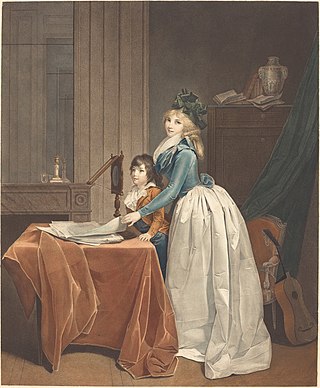
À la poupée is a largely historic intaglio printmaking technique for making colour prints by applying different ink colours to a single printing plate using ball-shaped wads of cloth, one for each colour. The paper has just one run through the press, but the inking needs to be carefully re-done after each impression is printed. Each impression usually varies at least slightly, sometimes very significantly.
Clare Romano (1922–2017) was an internationally known American printmaker and painter with works in the Metropolitan Museum of Art, the Museum of Modern Art, the Smithsonian American Art Museum, the Cooper Hewitt, Smithsonian Design Museum and other major collections. As an advocate, innovator, and educator in the field of printmaking, Romano has co-authored in collaboration with her husband, John Ross, The Complete Printmaker (1972), The Complete Collagraph (1980), and several other printmaking manuals that have become standard texts for universities. They founded their High Tide Press for artists books in 1991.

















